Babbel and Duolingo! You might be wondering which one is better, right? Well, let me break it down for you.
Babbel vs Duolingo – Which One Wins?
Okay, first things first. Babbel and Duolingo are both apps that help you learn new languages. They’re like language teachers on your phone.
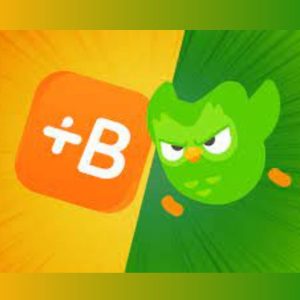
Babbel vs Duolingo: A Comparative Study for Language Learners
Are you looking for a language learning platform but not sure whether to go for Babbel or Duolingo? As a professional language learner, I’ve had extensive experience with both, and in this article, I’ll provide a comprehensive comparative study to help you make an informed decision.
Whether you’re a complete beginner or an advanced learner, it’s important to choose a language learning platform that suits your specific needs and preferences. Both Babbel and Duolingo have their advantages and disadvantages, and in this article, I’ll explore their differences, similarities, pricing, course content, teaching approach, user interface, gamification tools, language support, progress tracking and assessments.
Key Takeaways
- Babbel and Duolingo are two popular language learning platforms.
- This article provides a comprehensive comparative study to help you choose the platform that suits your specific needs and preferences.
- Factors to consider include pricing, course content, teaching approach, user interface, gamification tools, language support, and progress tracking and assessments.
- Both platforms have their advantages and disadvantages, so it’s important to make an informed decision.
- Stay tuned for a detailed analysis of Babbel vs Duolingo in the following sections.
Pricing and Subscription Options

When it comes to language learning platforms, pricing and subscription options are key considerations. In this section, I’ll take a detailed look at the cost structures of Babbel and Duolingo, comparing their subscription plans, free features, and any additional costs involved.
Babbel Pricing and Subscription Options
Babbel offers a subscription-based pricing model, with the following options:
| Subscription Plan | Price | Duration | Features |
|---|---|---|---|
| 1 Month | $12.95 | 30 days | Access to all courses and features |
| 3 Months | $8.95/month | 90 days | Access to all courses and features |
| 6 Months | $7.45/month | 180 days | Access to all courses and features |
| 1 Year | $6.95/month | 365 days | Access to all courses and features |
Babbel also offers a free trial of the first lesson in any course, as well as a 20-day money-back guarantee on all subscriptions.
Duolingo Pricing and Subscription Options
Duolingo, on the other hand, offers a freemium model, with the following options:
| Subscription Plan | Price | Duration | Features |
|---|---|---|---|
| Free | $0 | N/A | Access to a limited selection of courses and features |
| Duolingo Plus | $9.99/month | 30 days | Ad-free experience, unlimited hearts, offline access, and progress quiz |
While the free version of Duolingo offers a good range of features, the Duolingo Plus subscription provides additional benefits for a more seamless learning experience.
Overall, the pricing and subscription options of both Babbel and Duolingo offer good value for learners of different levels. Babbel’s subscription-based model is better suited for those who prefer a structured approach and are willing to pay for a comprehensive course, while Duolingo’s freemium model is ideal for those who are looking for a cost-effective, yet effective way to learn a new language.
Course Content and Approach
When it comes to language learning platforms, the quality and diversity of course content are important factors to consider. In this section, I’ll compare the course content and teaching approach of Babbel and Duolingo, to help you determine which platform is best for your language learning needs and preferences.
Babbel’s Course Content and Approach
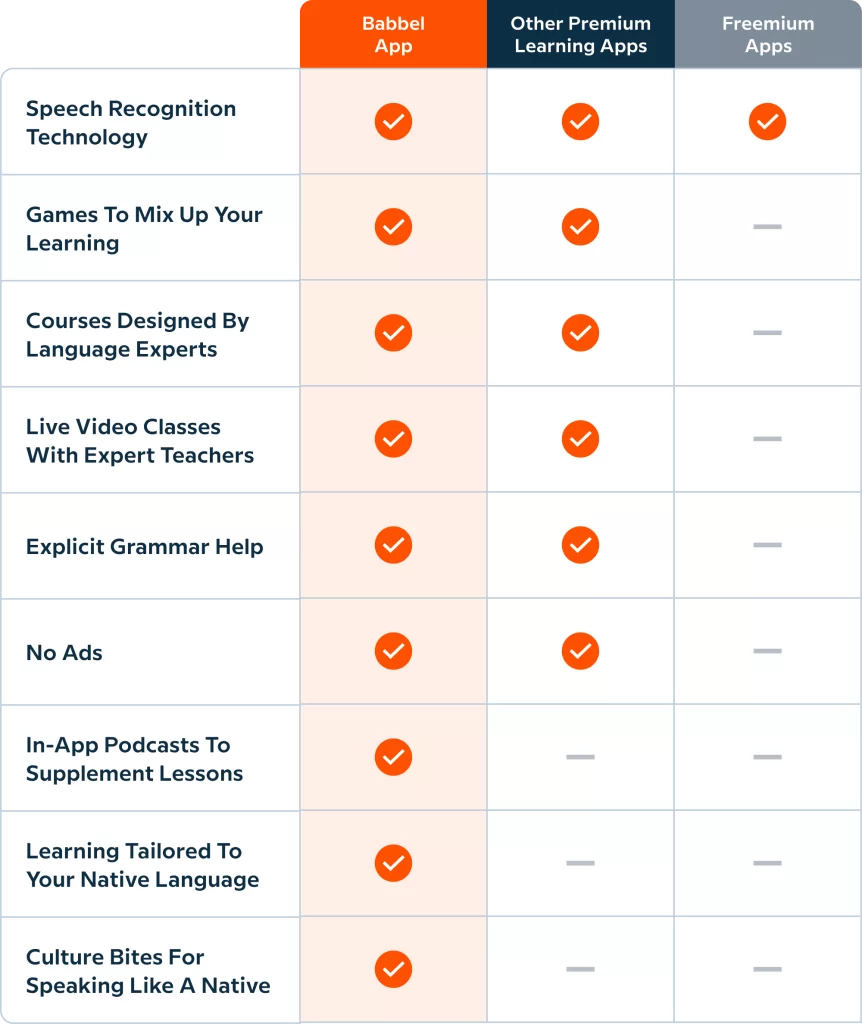
Babbel offers a wide range of language courses, covering topics such as grammar, vocabulary, pronunciation, and conversation. What sets Babbel apart from other language learning platforms is its focus on practical, real-world language skills. The courses are designed by language experts, and the content is created to help learners achieve their language goals quickly and effectively.
The teaching approach used by Babbel is based on the principles of communicative language teaching (CLT). This approach highlights the practical use of language in real-life situations, allowing learners to build their language skills through meaningful communication activities. Babbel’s courses are structured around dialogues, which simulate real-life conversations and help learners develop their listening and speaking skills. The courses are also interactive, with features such as speech recognition technology and personalized feedback to help learners improve their pronunciation and grammar.
Duolingo’s Course Content and Approach
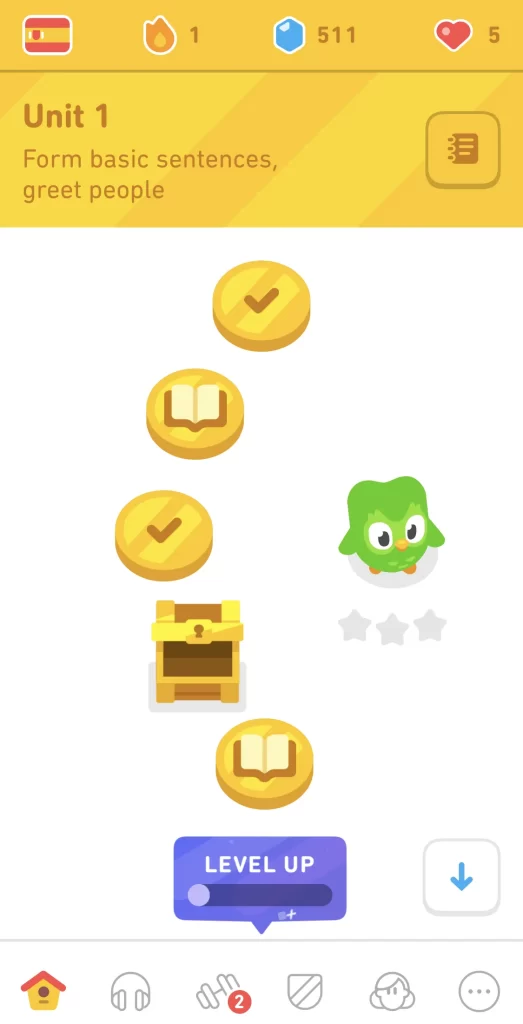
Duolingo offers a variety of language courses, ranging from beginner to advanced levels. The courses cover topics such as vocabulary, grammar, and reading comprehension, and are designed to be fun and engaging. Duolingo’s teaching approach is based on gamification, which means that learners are motivated to learn through the use of game-like features such as points, badges, and rewards.
The courses are also structured around a series of exercises, which are designed to help learners practice different language skills. One unique feature of Duolingo is its use of translation exercises, where learners are asked to translate sentences from their native language to the language they are learning. While this approach can be helpful for developing reading and writing skills, it may not be as effective for developing speaking and listening skills.
Comparing Course Content and Approach
| Platform | Course Content | Teaching Approach |
|---|---|---|
| Babbel | Practical and real-world focus | Communicative Language Teaching (CLT) |
| Duolingo | Fun and engaging | Gamification |
Overall, both Babbel and Duolingo offer a variety of language courses, each with its own strengths and weaknesses. Babbel’s practical approach may be more appealing to learners who want to focus on real-life language skills, while Duolingo’s gamification may be more appealing to learners who want to learn in a more fun and engaging way. Ultimately, the best course content and teaching approach will depend on your individual language learning goals and preferences.
Learning Experience and User Interface
When it comes to language learning platforms, the learning experience and user interface are essential elements that can make or break your motivation and commitment to the process. In this section, I will discuss the overall learning experience and user interface of Babbel and Duolingo, highlighting their strengths and weaknesses.
Babbel Learning Experience and User Interface
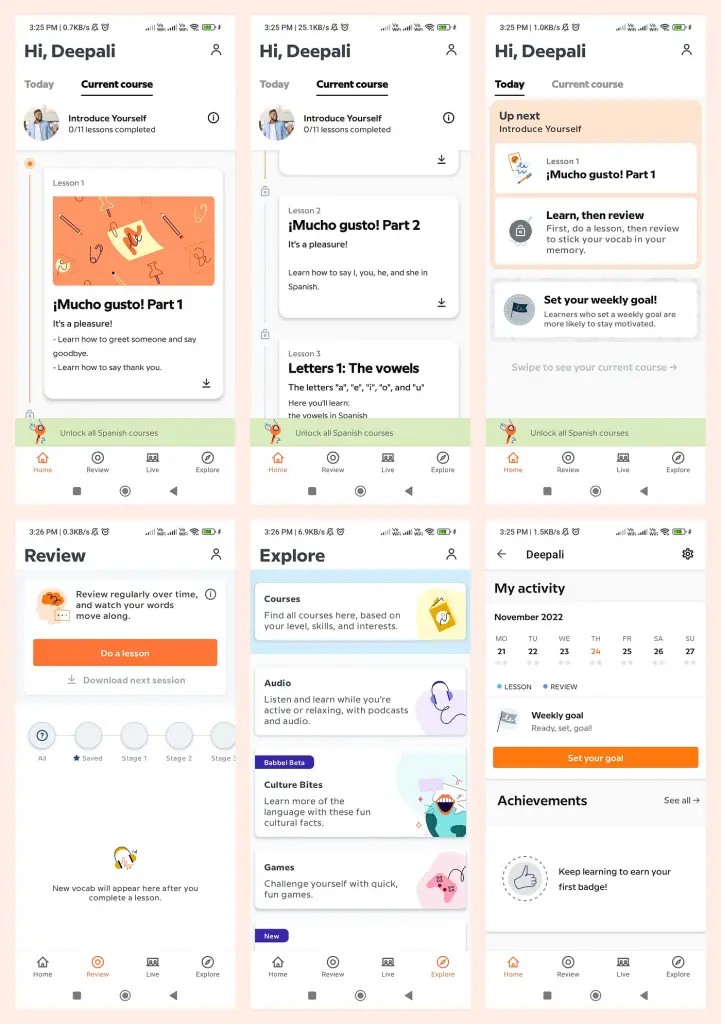
Babbel’s interface is clean, intuitive, and easy to navigate. The course content is presented in a structured format, making it easy to understand and follow. The platform offers various interactive features, such as listening and speaking exercises, to help learners practice their pronunciation and comprehension skills. Babbel also offers a mobile app, which syncs with your account and allows you to learn on-the-go.
One drawback of Babbel’s learning experience is that it can feel overly structured and repetitive at times, which may not suit all learners’ preferences. Additionally, Babbel’s course content can feel too easy or slow-paced for advanced learners.
Duolingo Learning Experience and User Interface
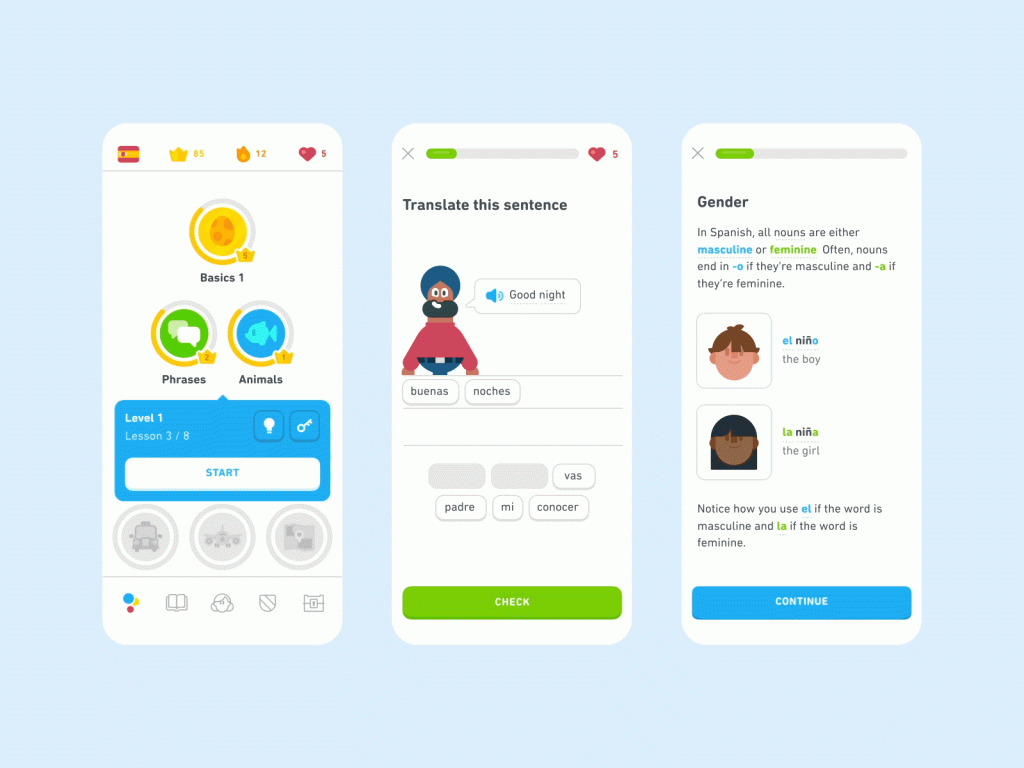
Duolingo’s interface is bright and colorful, with a friendly feel that appeals to a wide range of learners. The platform’s gamification elements, including the use of badges and points, help to keep learners motivated and engaged. Duolingo’s course content is varied and covers a broad range of topics and skills. The platform also offers a mobile app, which allows learners to practice on-the-go and download lessons for offline use.
However, one potential drawback of Duolingo’s learning experience is that it can feel less structured and less focused on teaching grammar rules than Babbel. Additionally, some learners may find the gamification elements to be distracting or unnecessary.
Side-by-Side Comparison
| Babbel | Duolingo | |
|---|---|---|
| User Interface | Simple and structured; straightforward navigation | Colorful and engaging; gamification elements |
| Learning Experience | Can feel repetitive or slow-paced; may not be challenging enough for advanced learners | Varied course content; covers a broad range of topics and skills, but less focused on grammar rules |
| Mobile App | Syncs with account; allows for learning on-the-go | Syncs with account; allows for learning on-the-go; downloadable lessons for offline use |
Overall, both Babbel and Duolingo offer engaging and effective learning experiences with user-friendly interfaces. Your preference may depend on your learning style, priorities, and goals. Babbel’s structured approach and focus on grammar may appeal to those who want a more traditional language learning experience, while Duolingo’s game-like format may be better suited for those who want a more casual and fun approach.
Gamification and Motivational Tools
As language learning can easily become tedious and overwhelming, gamification and motivational tools can be a helpful way to keep learners engaged and motivated. Let’s take a closer look at how Babbel and Duolingo incorporate these elements into their platforms.
Babbel
Babbel’s gamification features include interactive grammar and vocabulary lessons, goal-setting options, and a streak system that rewards you for consecutive days of learning. Additionally, Babbel has a speech recognition feature that allows you to practice pronunciation and receive instant feedback on your performance.
For motivational tools, Babbel offers personalized review sessions based on your previous lessons and areas that need improvement. Also, Babbel provides learners with real-life conversation examples, so that they can put their language skills to practice and boost their confidence.
Duolingo
Duolingo, on the other hand, has a more extensive gamification approach. The platform uses a point system to incentivize learners to complete lessons and progress through levels. Duolingo also provides learners with a virtual currency called ‘Lingots’ that can be redeemed for bonus features or additional lessons.
As for motivational tools, Duolingo’s “Streak Freeze” feature allows learners to maintain their streak even if they miss a day of learning. Duolingo also offers a social aspect to language learning with its “Clubs” feature, where learners can compete with or support their friends. Duolingo also has a feature called “Stories” that incorporates interactive scenarios into language lessons, making learning more engaging and fun.
In conclusion, both Babbel and Duolingo integrate gamification and motivational tools into their language learning platforms to make the process more enjoyable and productive. Babbel’s gamification highlights are its streak system and personalized review sessions, while Duolingo’s gamification is more extensive with point system and virtual currency. Babbel’s motivational tools focus on real-life conversations, and speech recognition, while Duolingo has Streak Freeze, Clubs, and Stories that make learning more interactive and sociable.
Language Support and Learning Resources
When it comes to learning a new language, having access to comprehensive language support and learning resources can make all the difference. Babbel and Duolingo offer a range of resources to help you on your language learning journey.
Language Support
Babbel provides language support through its team of native speaker teachers and via its 24/7 support team. You can reach out to a certified teacher at any time and get personalized feedback on your speaking and writing skills, while the customer support team can assist you with any technical issues or subscription queries.
Duolingo, on the other hand, offers less comprehensive language support. While there is a community forum where users can ask questions and interact with each other, there are no certified teachers available for personalized feedback.
Learning Resources
| Learning Resource | Babbel | Duolingo |
|---|---|---|
| Vocabulary | Babbel provides over 6,000 vocabulary words and phrases, with various categories such as food, transportation, and travel. | Duolingo has a database of over 2,000 vocabulary words and phrases, with a range of categories such as basics, animals, and hobbies. |
| Grammar | Babbel offers in-depth grammar lessons with interactive exercises to help you master grammar rules and structures. | Duolingo has grammar lessons integrated into its course content, but they are not as comprehensive as Babbel’s. |
| Audiovisual Content | Babbel has a range of audio and video content, including interactive dialogues and podcasts to help learners improve their listening and speaking skills. | Duolingo offers limited audio content, with audio clips embedded in its exercises and course content. |
| Cultural Insights | Babbel provides cultural insights related to the language being studied, including tips on etiquette and customs. It also has a travel section that features travel-related vocabulary and phrases. | Duolingo has a cultural notes section where users can read about cultural aspects related to the language being studied. |
From the table above, it’s clear that Babbel provides more comprehensive learning resources than Duolingo. However, both platforms offer a variety of resources that can help learners improve their language skills.
Progress Tracking and Assessments
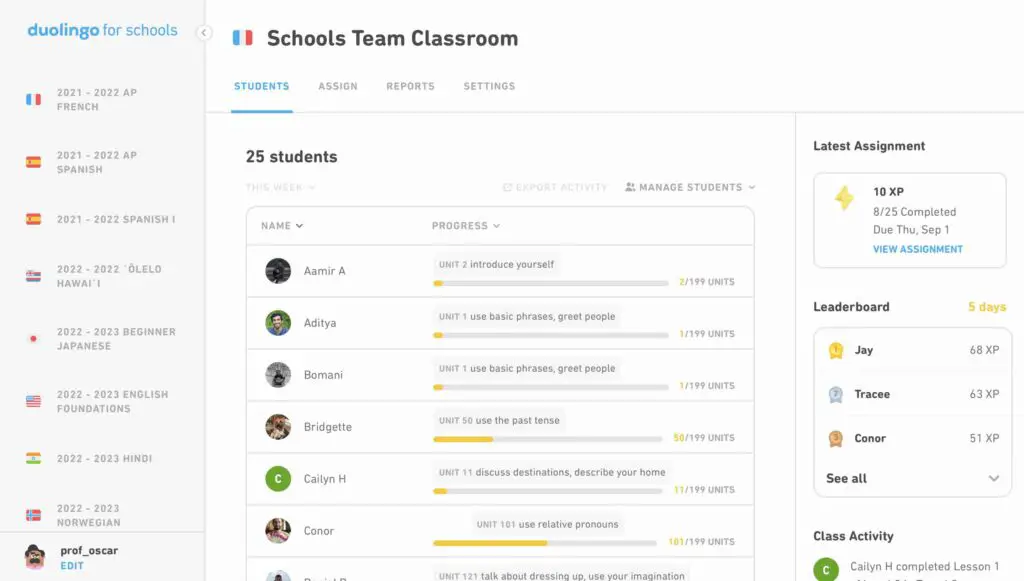
One of the most important aspects of language learning is being able to track your progress and assess your proficiency. Both Babbel and Duolingo offer various tools to help you monitor your learning achievements.
Babbel: On Babbel, you can track your progress through each individual course and lesson. The platform keeps track of which lessons you’ve completed, and how well you’ve done in each one. Babbel also provides a personalized review feature, which periodically quizzes you on previous lessons to help ensure you retain the information. Additionally, Babbel offers a certificate of completion for each course.
Duolingo: Duolingo’s progress tracking system allows you to see how much of the course you’ve completed and how well you’ve done on each individual lesson. The platform also provides a proficiency score, which is determined by a placement test taken at the beginning of the course and any subsequent checkpoints you pass. Duolingo also offers a leaderboard feature, which allows you to compete against other learners.
| Babbel | Duolingo | |
|---|---|---|
| Progress Tracking | Tracks progress through each course and lesson | Tracks progress through the course and gives proficiency score |
| Assessments | Provides personalized review quizzes and certificates of completion | Offers placement tests and checkpoints for proficiency score |
| Additional Features | N/A | Leaderboard to compete with other learners |
In terms of progress tracking and assessments, both Babbel and Duolingo offer useful features to help you monitor your progress and proficiency. However, while Babbel places a greater emphasis on personalized review and certification, Duolingo’s proficiency score and leaderboard add a competitive element to the learning experience.
Conclusion
After careful analysis of Babbel and Duolingo, I can confidently conclude that both platforms have their strengths and weaknesses. Babbel is better suited for learners who prefer a structured course with a focus on grammar and vocabulary, while Duolingo is perfect for those seeking a more casual and gamified learning experience.
My Recommendation
Ultimately, the choice between Babbel and Duolingo comes down to your personal learning style and preferences. If you are a serious learner looking to build a strong foundation in a new language, I recommend Babbel. However, if you want to learn a language in a more fun and relaxed manner, Duolingo is your best bet. Regardless of your choice, both platforms offer great resources and tools to help you achieve your language learning goals.
Final Thoughts
Learning a new language can be a challenging yet rewarding experience, and choosing the right learning platform is a crucial step on this journey. I hope this comparative study has helped you make an informed decision on which platform is best suited for you. Remember, consistency and practice are key to success in language learning, so start today and watch your language skills soar!
FAQ
Are Babbel and Duolingo suitable for beginners?
Yes, both Babbel and Duolingo offer courses specifically designed for beginners. They provide step-by-step lessons and interactive exercises to help beginners grasp the basics of a new language.
Can I use Babbel and Duolingo on my mobile device?
Yes, both Babbel and Duolingo have mobile apps available for iOS and Android devices. You can conveniently learn on the go using your smartphone or tablet.
Do Babbel and Duolingo offer live lessons or tutoring?
While Babbel focuses on self-paced learning, Duolingo does not currently offer live lessons or tutoring. However, Duolingo does provide a community forum where learners can interact and seek help from other users.
Are the courses on Babbel and Duolingo tailored to specific languages?
Yes, both platforms offer a wide range of language courses. Babbel covers popular languages such as Spanish, French, German, and Italian, as well as less commonly taught languages. Duolingo also offers courses in numerous languages, including Klingon and High Valyrian.
Can I track my progress and see my language learning achievements?
Yes, both Babbel and Duolingo provide progress tracking features that allow you to monitor your learning journey. You can see your achievements, track your streaks, and receive personalized feedback to help you stay motivated.
Are there any additional costs involved besides the subscription fees?
Babbel and Duolingo offer free access to basic language courses, but they also have premium subscription options that unlock additional features and content. However, there are no hidden costs or in-app purchases required to access and use the core features of these platforms.
Can I switch between languages or change my course on Babbel and Duolingo?
Yes, both Babbel and Duolingo allow you to switch between languages or change your course at any time. This flexibility ensures that you can explore multiple languages or focus on a specific language of interest.
How long does it take to complete a language course on Babbel or Duolingo?
The time it takes to complete a language course on Babbel or Duolingo varies depending on your pace, dedication, and prior language learning experience. Both platforms offer self-paced learning, allowing you to progress at a speed that suits you best.
Babbel – Like a Personal Language Coach (★★★★☆):
Babbel is like having your own language coach. It’s really good at teaching you how to have conversations in a new language. It’s like a friendly chat with a teacher.
Duolingo – Fun and Free (★★★★☆):
Duolingo, on the other hand, is fun and free. You can learn lots of languages without paying a cent. It’s like a language game that you can play anytime.
What’s Good About Babbel? (★★★★☆):
Babbel is great for people who want to talk with confidence. It focuses on practical, real-life conversations. You’ll sound more like a local in no time.
What’s Good About Duolingo? (★★★★☆):
Duolingo is awesome if you want to learn a language for fun. It’s like a game with levels and challenges. Plus, it’s free! You can’t beat that.
Where Babbel Wins (★★★★☆):
Babbel shines when you want to get serious about speaking a language correctly. It helps you sound like a pro. But here’s the thing – it’s not free, you’ll need to pay.
Where Duolingo Shines (★★★★☆):
Duolingo is like a fun adventure. It’s perfect for beginners or if you want to dabble in a language. And did I mention it’s free?
Room for Improvement (★★★☆☆):
Both apps are great, but they’re not perfect. Sometimes Babbel can get a bit pricey, and Duolingo might not make you fluent.
Babbel vs Duolingo in a Nutshell:
In the Babbel vs Duolingo battle, it really depends on what you’re looking for. If you’re serious about speaking like a local, go for Babbel, even if you have to pay a bit. But if you just want to have fun learning a new language without opening your wallet, Duolingo is the way to go.
Remember, both apps can help you on your language journey. It’s all about what works best for you! Happy language learning!



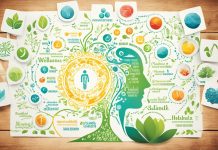





















How does Duolingo work?
Duolingo is designed to make language learning engaging and interactive. Here’s how it operates:
Gamified Lessons: Duolingo’s core teaching method is based on gamification. Language lessons are presented as fun and interactive games or exercises. These games include various question formats to cover all language skills: reading, writing, speaking, and listening.
Progressive Learning: Duolingo’s courses are structured in a progressive manner. Learners start with basic vocabulary and grammar and gradually move to more complex concepts. This ensures that learners build a strong foundation before advancing to more challenging material.
Translation Exercises: Duolingo incorporates translation exercises where learners translate sentences from the target language into their native language and vice versa. This helps reinforce vocabulary and grammar rules.
Speaking Practice: Duolingo has a feature that allows users to practice speaking and pronunciation. It uses voice recognition technology to assess the accuracy of your pronunciation and provide feedback.
Listening Comprehension: The app includes audio exercises where learners listen to native speakers and are required to understand and respond to spoken language. This helps improve listening and comprehension skills.
Immediate Feedback: Duolingo provides instant feedback on exercises. If you make a mistake, it corrects you right away. This helps learners understand their errors and learn from them.
Daily Goals and Streaks: Duolingo encourages daily practice by setting goals and maintaining streaks. Users can set daily time goals or XP (experience point) goals to stay motivated and consistent in their learning.
Personalization: Duolingo adapts to individual learners. If you make consistent errors in a particular area, it will provide more practice in that area to help you improve.
Discussion Forums: Duolingo offers discussion forums for each language course where learners can ask questions, seek clarification, and interact with a community of learners and native speakers.
Duolingo Plus: While the app is free, Duolingo offers a premium subscription service called Duolingo Plus. This subscription removes ads, allows offline learning, and provides other benefits.
Can Duolingo make me fluent in a language?
Duolingo is a helpful way to learn a language, but becoming really good at it also needs practice and being in a place where people speak that language a lot. It’s a tool to learn, but you need to use it along with talking and listening to people who speak the language to get really good.
How many languages are available on Duolingo?
Duolingo has a big collection of languages you can learn. It’s not just the common ones like Spanish and French; they have over 30 different languages! So, whether you’re interested in something widely spoken or something a bit more unique, Duolingo has you covered. You can explore languages from all around the world, making it a great choice for language learners with various interests.
What are Duolingo’s paid features?
Duolingo Plus is like a special upgrade that you can choose if you want more from the app. Here’s what you get with Duolingo Plus:
Ad-Free Experience: With Duolingo Plus, you won’t see any ads while you’re learning. That means no interruptions when you’re practicing your language skills.
Offline Access: You can download lessons and use them offline. This is super handy when you don’t have an internet connection. You can learn on the go, even in places with no Wi-Fi.
Progress Quizzes: Duolingo Plus lets you take progress quizzes. These quizzes help you see how well you’re doing and where you might need a bit more practice. It’s like a check-up for your language skills.
So, Duolingo Plus is like a premium version of Duolingo that gives you some extra perks to enhance your learning experience. It’s totally optional, but some people find it really useful!
How long should I use Duolingo daily to see progress?
Using Duolingo doesn’t mean you have to spend hours each day. Even if you only practice for a few minutes each day, it can make a big difference over time. Consistency is the key. It’s like planting seeds in a garden; you don’t need to water them for hours, just a little bit every day, and you’ll see your skills grow. So, don’t worry about spending a lot of time. Just make it a habit to use Duolingo regularly, and you’ll definitely make progress in your language learning journey.
Can Duolingo help with language certification exams?
Duolingo can be a useful tool to prepare for language certification exams like TOEFL (Test of English as a Foreign Language) and others. Here’s how:
1. Aligned Courses: Duolingo has specific courses designed to align with the content and skills needed for certain language proficiency exams. For example, they have a TOEFL preparation course. These courses can provide a structured approach to cover the topics and skills required for the test.
2. Practice and Reinforcement: Duolingo’s exercises can help you practice your reading, writing, speaking, and listening skills, which are essential for language certification exams. Regular practice using Duolingo can help reinforce your language skills and build confidence.
3. Vocabulary and Grammar: Many language certification exams include vocabulary and grammar components. Duolingo covers these aspects comprehensively in its courses, which can be beneficial for exam preparation.
However, it’s important to note that while Duolingo can be a valuable part of your exam preparation, it may not be sufficient on its own. Language certification exams often have specific formats and requirements, and it’s advisable to supplement your Duolingo practice with additional study materials, such as official exam guides and practice tests. Additionally, speaking and listening components of exams may require interactive practice beyond what Duolingo offers.
So, Duolingo can certainly help you prepare for language certification exams, but it’s a good idea to complement it with targeted exam resources and practice to maximize your chances of success.
Is Duolingo suitable for kids?
Duolingo isn’t just for adults or older learners. It’s also a great choice for kids who want to learn languages in a fun and educational way. Duolingo offers a special app designed just for kids, called “Duolingo Kids.”
Here’s why Duolingo Kids is suitable for young language learners:
Kid-Friendly Design: Duolingo Kids has a colorful and engaging design that’s perfect for children. It makes learning feel like a fun adventure.
Interactive Lessons: The app includes interactive lessons that are easy to understand. Kids can practice listening, speaking, and reading in a playful and interactive environment.
Rewards and Motivation: Duolingo Kids uses a rewards system to motivate kids to keep learning. They earn virtual coins and unlock cute characters, which can make the learning experience more enjoyable.
Parental Involvement: Parents can also be part of the learning journey. They can set up accounts for their kids and track their progress to see how well they’re doing.
Safety: Duolingo Kids is designed with children’s safety in mind. It doesn’t have any ads or inappropriate content, so parents can feel good about their kids using it.
How much Babbel cost?
Here’s a breakdown of Babbel’s pricing:
Free Trial: Babbel typically offers a short free trial period, usually around 7 to 14 days, during which users can access some of the course content to get a feel for the platform.
Paid Subscription Plans: Babbel primarily operates on a subscription-based model, where users pay for access to the full range of language courses. The cost of a Babbel subscription can vary based on several factors:
Subscription Length: Babbel offers subscriptions in various durations, such as monthly, quarterly, or annual plans. Longer plans often come with cost savings compared to monthly subscriptions.
Language Selection: The pricing may also vary depending on the language you wish to learn. Some languages may be more expensive due to factors like demand and the depth of course content.
Discounts: Babbel frequently offers discounts and promotions, especially for longer subscription plans. These discounts can significantly reduce the overall cost of learning.
Babbel for Business: Babbel also offers solutions for businesses and organizations. Pricing for these plans is typically customized based on the company’s needs and the number of users.
It’s important to note that while Babbel offers a free trial, the majority of its content and features are accessible through paid subscriptions. The cost of a subscription is an investment in comprehensive language learning materials, interactive exercises, and access to all lessons, including more advanced content.
To get the most up-to-date pricing information and details on available discounts, it’s advisable to visit Babbel’s official website or app, as pricing can change over time.
Right now the prices start at 8 Euros for month for 12 months subscription and end at 16 Euros per month for 3 months subscription.
What languages I can learn on Babbel?
1. Popular Languages: Babbel provides comprehensive courses for some of the most widely spoken and learned languages, including:
Spanish
French
German
Italian
Portuguese
Russian
Dutch
Swedish
Turkish
Polish
Danish
Norwegian
Indonesian
2. Less Common Languages: In addition to the popular languages, Babbel also offers courses in languages that are less commonly taught but may still be of interest to learners. These languages can include:
Dutch
Swedish
Turkish
Polish
Danish
Norwegian
Indonesian
Greek
Hebrew
Arabic
Hindi
3. Specialized Courses: Babbel occasionally introduces specialized courses and content based on current events or unique language interests. These courses may focus on specific topics, dialects, or cultural aspects related to certain languages.
It’s important to note that the availability of languages on Babbel may change over time as the platform continues to expand its offerings.
Is there a summary of Babbel reviews?
Babbel reviews are generally positive, with many users finding value in the platform’s language learning programs.
1. Effective Language Learning: Many users praised Babbel for its effectiveness in teaching practical language skills. They found the lessons engaging and felt that they were making progress in their language proficiency.
2. Real-Life Conversations: Babbel’s focus on real-life conversations and scenarios was appreciated by learners. Users liked that they could apply what they learned in everyday situations.
3. User-Friendly Interface: Babbel’s user-friendly interface and interactive exercises were frequently mentioned. Users appreciated the ease of navigation and the app’s straightforward design.
4. Flexibility: Babbel’s self-paced learning approach was well-received. Learners appreciated the ability to choose their own pace and practice on their schedule.
5. Offline Access: The option to download lessons for offline use was seen as a significant advantage, especially for learners who travel frequently or have limited internet access.
6. Pronunciation Practice: Many users found Babbel’s pronunciation exercises and feedback valuable for improving their speaking skills.
7. Paid Subscription: Some users mentioned that while the free trial was helpful for getting started, they ultimately subscribed to the paid version to access the full range of content and features.
8. Variety of Languages: Users praised Babbel for offering a diverse selection of languages to learn, including both widely spoken and less common languages.
9. Improvement Areas: Some reviewers mentioned that they wished for more advanced content or more in-depth cultural insights in certain language courses. Others noted that Babbel might not be the best choice for those seeking fluency in highly complex or less commonly taught languages.
Keep in mind that reviews can vary from person to person based on individual learning preferences and goals. It’s a good practice to explore multiple reviews and consider your specific language learning needs when evaluating Babbel or any language learning platform.